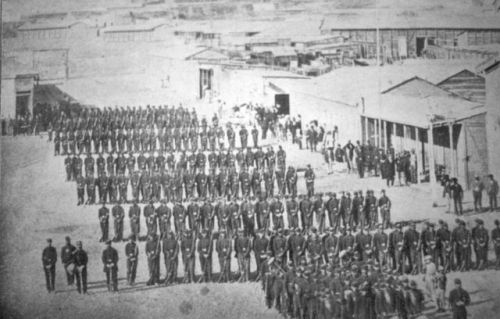peashooter85:The Gras Rifle Part IV — The Chilean GrasIn case you missed Part I, Part II, Part IIIIn
peashooter85:The Gras Rifle Part IV — The Chilean GrasIn case you missed Part I, Part II, Part IIIIn the previous post I began to detail the export models of the Gras rifle. Along with Greece there was one other major nation who was interested in the Gras in the late 19th century. in South America some nations purchased limited amounts of Chassepot and Gras rifles. The largest buyer of the Gras was Chile, who was interested in the design after buying a number of surplus Chassepot rifles shortly after the Franco Prussian War. In the 1870′s Chile made attempts to expand and modernize it’s military, and they started by adopting the Comblain rifle, a Belgian falling block breechloading rifle. However Belgian production of the Comblain could not keep up, nor could the Chileans produce significant amounts of domestic models. Thus, Chile began to supplement it’s stocks with other designs. The most popular was the Gras. Like the Greek Gras from the previous post, the Chilean Gras was produced under license by the Austrian company Steyr, as the French could not produce enough to meet their own demands. Unlike the Greek Gras, the Chileans ordered a special caliber change from 11X59mm Gras to 11x50mm Comblain in order to share common caliber with the Comblain rifle. An order of 21,799 Gras rifles were ordered from the Steyr factory. They would prominently be used in the War of the Pacific from 1879 to 1883, which was over a border dispute between Chile, Bolivia, and Peru over the guano rich lands of the Pacific coast. Guano is a nitrate rich form of bird poo that is highly valued as a fertilizer. The war resulted in a victory for Chile, who annexed the territory making Bolivia a landlocked country. A glorious rifle for a glorious war over birdshit. -- source link
Tumblr Blog : peashooter85.tumblr.com


